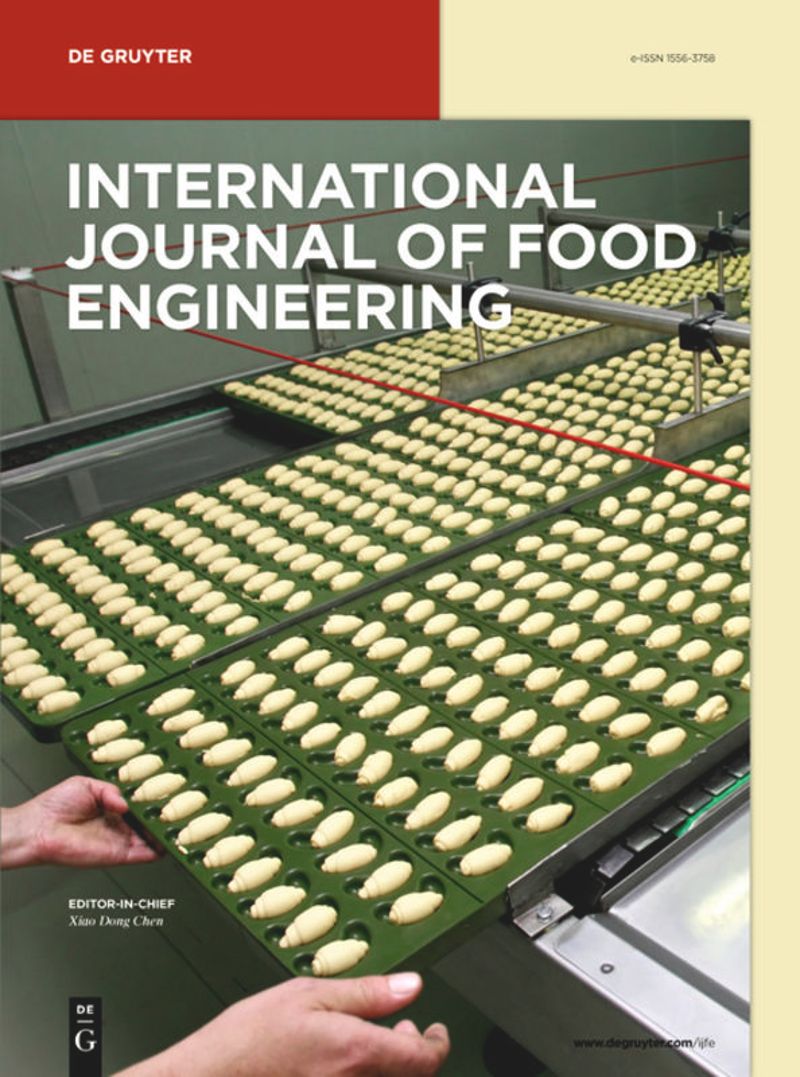Microencapsulation of Lactobacillus plantarum with enzymatic hydrolysate of soybean protein isolate for improved acid resistance and gastrointestinal survival in vitro
IF 1.4
4区 农林科学
引用次数: 2
Abstract
Abstract This study aimed to improve the acid resistance effect of Lactobacillus plantarum through microencapsulation with enzymatic hydrolysate of soybean protein isolate (EHSPI) and modified phospholipid. Response surface methodology was adopted to establish the optimal microencapsulation technology of L. plantarum, while coating characters were evaluated. Through response surface methodology, the optimal conditions were obtained as follows based on microencapsulation efficiency: the ratio of bacteria/EHSPI 1:1.83, EHSPI content 4.01%, modified phospholipid content 11.41%. The results of digestion in vitro showed that after passing through the simulated gastric fluid (SGF), the L. plantarum was released and reached 3.55 × 108 CFU/mL in the simulated intestinal fluid. Meanwhile, the surviving bacteria number of control significantly decreased to 2.63 × 104 CFU/mL (P < 0.05) at 120 min in SGF. In sum, the acid resistance and survival of L. plantarum were improved in SGF in vitro, through the microencapsulation technology based on EHSPI.大豆分离蛋白酶解物微胶囊化植物乳杆菌提高体外耐酸能力和胃肠存活率
摘要本研究旨在用大豆分离蛋白酶解物和改性磷脂微胶囊化,提高植物乳杆菌的耐酸性。采用响应面法建立了植物乳杆菌的最佳微胶囊化工艺,并对其包衣特性进行了评价。通过响应面法,以微胶囊化效率为基础,确定了微胶囊化的最佳条件:细菌/EHSPI比例为1:1.83,EHSPI含量为4.01%,改性磷脂含量为11.41%。体外消化结果表明,通过模拟胃液(SGF)后,植物乳杆菌在模拟肠液中的释放量达到3.55×。同时,对照组在SGF中的存活菌数在120min时显著下降至2.63×104CFU/mL(P<0.05)。总之,通过基于EHSPI的微胶囊化技术,植物乳杆菌在体外SGF中的耐酸性和存活率得到了提高。
本文章由计算机程序翻译,如有差异,请以英文原文为准。
求助全文
约1分钟内获得全文
求助全文
来源期刊
CiteScore
3.20
自引率
0.00%
发文量
52
审稿时长
3.8 months
期刊介绍:
International Journal of Food Engineering is devoted to engineering disciplines related to processing foods. The areas of interest include heat, mass transfer and fluid flow in food processing; food microstructure development and characterization; application of artificial intelligence in food engineering research and in industry; food biotechnology; and mathematical modeling and software development for food processing purposes. Authors and editors come from top engineering programs around the world: the U.S., Canada, the U.K., and Western Europe, but also South America, Asia, Africa, and the Middle East.

 求助内容:
求助内容: 应助结果提醒方式:
应助结果提醒方式:


